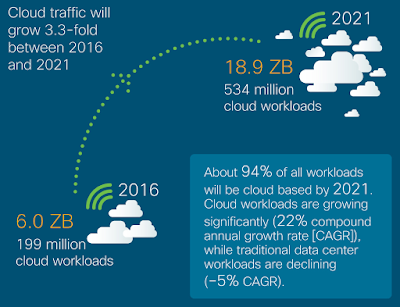
More CIOs and CTOs are seeking to gain benefits of a simplified and more manageable IT infrastructure for their organisations. As a result, worldwide integrated systems revenue is forecast to total $12.3 billion in 2018 – that's an increase of 18.4 percent from 2017, according to the latest study by Gartner.
The hyperconverged integrated systems (HCIS) segment will experience the strongest growth (55 percent). By contrast, integrated stack systems will experience a five percent decline.
IT integrated systems market development
"The majority of integrated systems replace existing infrastructure, which is great for cost, agility and consolidation of IT and efficiency metrics," said Naveen Mishra, research director at Gartner.
When implementing this as part of a digital business initiative, however, IT organiSations must look at how the potential savings of capital expenditure (capex), may be offset by potential shifts in operating expenditure (opex). According to the Gartner assessment, the following trends are impacting the integrated services market.
Integrated infrastructure systems (IIS) integrate server, storage and network hardware, along with management software, to provide shared compute infrastructure. Gartner predicts that by 2019, 30 percent of organiSations that are due to refresh IIS will shift to newer, more flexible and cost-effective alternatives, such as reference architecture and HCIS.
HCIS is a platform offering shared compute and storage resources, based on software-defined storage, software-defined compute, commodity hardware and a unified management interface. Strong growth is being driven by organisations shifting away from IIS to HCIS for its support of wider data center uses.
Edge infrastructure is also expected to incrementally accelerate HCIS adoption. In particular, nonvolatile memory express (NVMe) protocol for flash technology is being embraced in HCIS to deliver better input/output operations per second (IOPS), smaller footprints, lower latency and power consumption.
Gartner predicts NVMe will account for 5 percent of HCIS spend by 2020, from virtually zero in 2017.
Reference architecture is the second-largest revenue contributor in the integrated systems market for 2018. It provides a documented representation such as a blueprint, document model or graphic that illustrates "how things fit together" to address a specific business need or opportunity.
Its value is to provide a common vocabulary, understanding and perspective to discuss implementation options, integration requirements and areas of customisation.
Outlook for integrated stack systems
Integrated stack systems comprised of server, storage and network hardware are integrated with application software to provide appliance functionality. These systems will slowly reduce their contribution to the overall integrated system market, primarily owing to the cloud-centric strategy driven by major IT providers.
That being said, Gartner forecasts that 20 percent of organisations with refresh due for integrated stack systems will likely shift to cloud-based alternatives by 2020.












